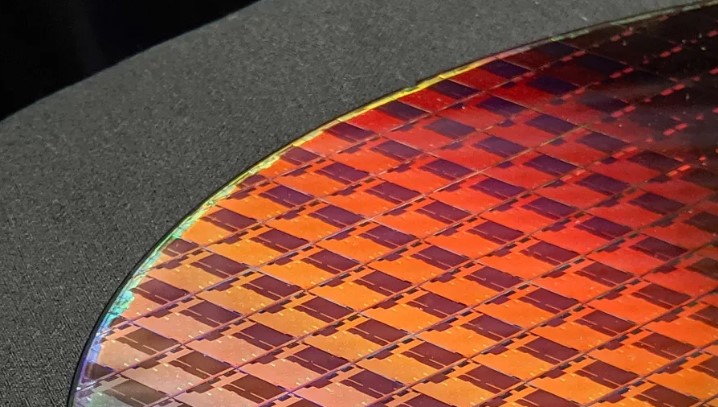
Intel has a lot to prove. 2018 marked the chipmaker’s 50th anniversary, but it was also a year that shook the company to its core. It was the year that Intel lost its CEO, struggled with Spectre and Meltdown, and reportedly lost Apple’s confidence as far as chips for future Macs are concerned. Above all, it was the year the world finally realized Intel processors had hit a wall, after yet another failure to shrink its circuits down to the “10 nanometer” process node.
But now, after years of delays, the company is about to bring its first real batch* of 10nm CPUs to the world. Today, the company is officially taking the wraps off its 10th Gen Intel Core processors, codename “Ice Lake,” and revealing some of what they might be able to do for your next PC when they ship in June.
Here’s what you need to know.
THEY’RE COMING FOR THIN LAPTOPS AND TABLETS FIRST
Each new generation of Intel processors typically comes in a variety of flavors depending on how much power you need, from beefy 95-watt desktop gaming chips all the way down to 5 or 7-watt Y-series parts designed for extremely thin, fanless laptops and convertible tablets.
But Intel isn’t talking about most of those parts today. Ice Lake will start with 9W, 15W and 28W parts with up to 4 cores, 8 threads and a 4.1GHz turbo clockspeed, meaning it currently tops out at the kind of chip you’d find in Apple’s 13-inch MacBook Pro. Anything beefier will apparently have to wait.
FASTER, BUT BY HOW MUCH?
Ice Lake is faster, and faster is good — but Intel’s promises around speed aren’t particularly mindblowing ones.
On the CPU side, Intel says that clock for clock, Ice Lake’s performance is 18 percent faster, which sounds impressive ‘til you consider it’s comparing against the Skylake cores the company released nearly four years ago!
Single-threaded performance has also shot up with the new Sunnycove cores — but now we’re comparing against the nearly-five-years-ago Broadwell.
Ice Lake’s actually impressive boost is in graphics horsepower, where Intel says it’s nearly doubled the performance of its previous 15W parts now that its Gen11 integrated graphics have 1.12 teraflops of FP32 compute power at their disposal. But that still won’t necessarily translate into smooth 1080p gaming, as you can see in this chart:
On the plus side, this is a 15W processor doing integrated graphics work that you would have needed a thicker laptop with a 28W processor to do before. But we saw better from Intel’s one-off hybrid parts with AMD Radeon graphics inside, and we’re not yet at the point you’ll do without discrete graphics by choice.
Other than that, Intel’s mostly promising those big speed boosts in rather specific areas, like 2x faster HEVC encoding to spit out faster, higher quality video at lower file sizes, or 2.5x the “AI performance” for machine learning tasks like image recognition. (Ice Lake can be that much faster at searching for specific kinds of photos in your Microsoft Photos library, for instance.)
But all of these depend on which exact Ice Lake processor you pick — say, one with Intel’s Iris Plus graphics to get that full graphic boost — and Intel didn’t share the names or specs of any specific components with us today.
MORE MONITOR SUPPORT
Even if Gen 11 graphics isn’t a gaming beast, it may help you drive a more potent display or three. Intel says its three display pipes now support up to a 5K monitor at 60Hz or a 4K monitor at 120Hz with 10-bit color, and Intel now supports VESA Adaptive Sync, the standardized version of the motion-blur and screen-tearing reduction idea popularized by Nvidia and AMD as G-Sync and FreeSync respectively.
That should mean smoother gameplay even if the framerates aren’t quite there.
ICE LAKE’S MOST EXCITING ADDITIONS AREN’T GUARANTEED
Honestly, the most interesting part of Ice Lake may not be anything the processor can do all by itself — but how they make it way more likely that your next laptop will include the incredibly useful do-it-all Thunderbolt 3 port and speedy Wi-Fi 6 technologies. That’s because Intel revealed in January that Ice Lake will bake those into the actual silicon. But we’re learning today that they, too, come with a couple of caveats.
Even though Ice Lake’s 10nm CPU and 14nm PCH companion chip (yes, it’s not all 10nm) mean that manufacturers no longer need to buy and find space to integrate a Thunderbolt 3 controller or a full Wi-Fi module onto their laptop or desktop motherboards, there are still additional components they’ll need to source from Intel to make it work.
In the case of Thunderbolt 3, they’ll need to buy and integrate retimers chips from Intel, and Thunderbolt 3 accessory makers will still need to buy the regular controllers for those; in the case of Wi-Fi 6, there’s a new, smaller companion radio module that manufacturers can buy (like the 802.11ac CNVi companions for 9th Gen Core) but they still need a separate module to make it work:
Still, Intel’s expecting these moves to greatly spur adoption of both Thunderbolt 3 and Wi-Fi 6 compared to the status quo, and says that reducing complexity of Thunderbolt 3 in particular has been shown to save up to 300mW of power. And the fact that USB 4 is basically about to become Thunderbolt 3 suggests that adoption is not going to be a huge problem there, anyhow.
We’ll let you know what we truly think of Ice Lake when Intel reveals the actual parts — and when we get a chance to try those chips for ourselves.
